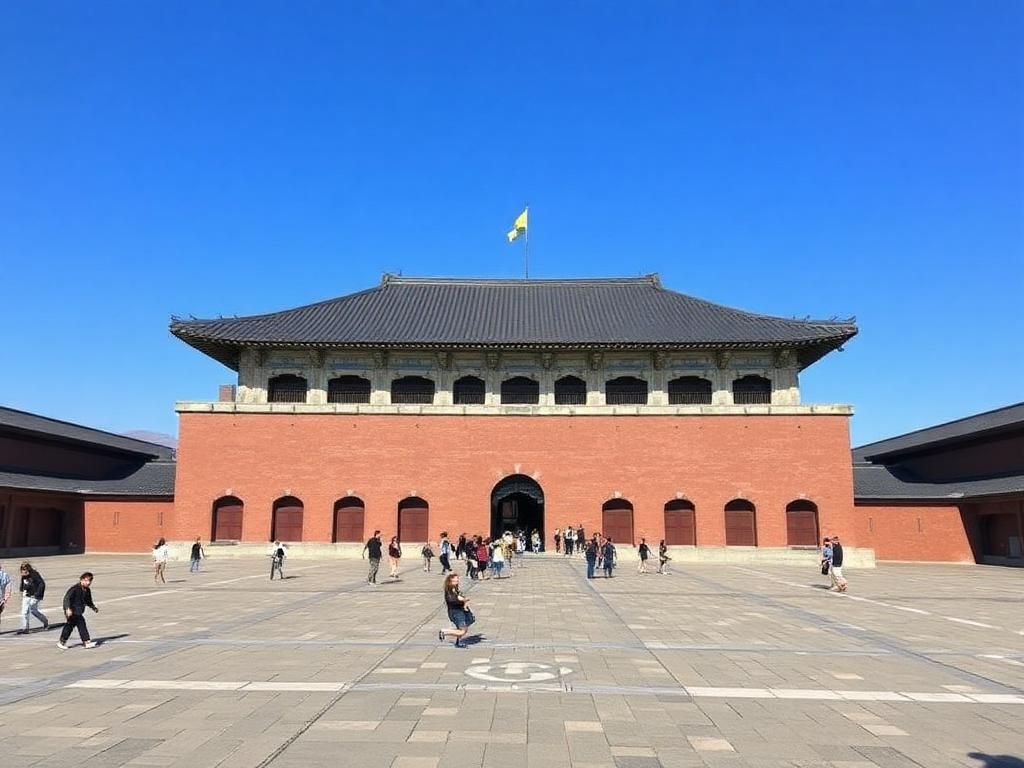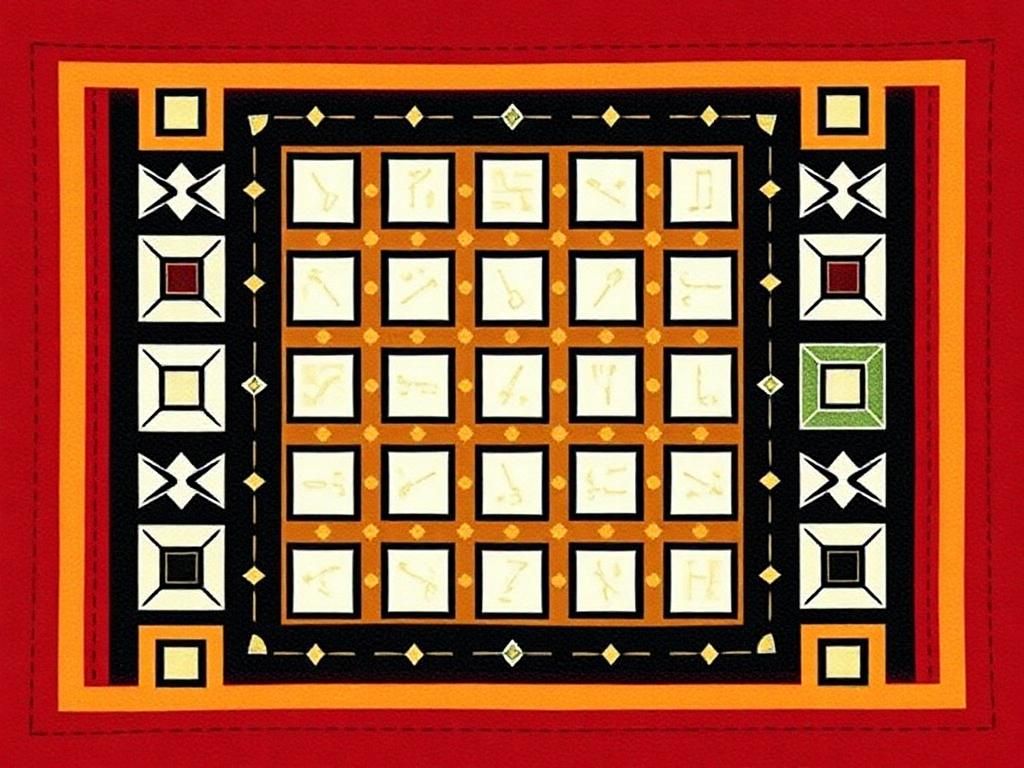Understanding the symbolism of squares reveals its profound significance in various contexts, spanning from ancient civilizations to modern-day culture. A square is defined as a shape with four equal sides and right angles, embodying concepts of symmetry and balance. The symbolism associated with geometric shapes varies significantly across different cultures and communities, with the square often representing critical principles like stability, balance, and unity. This article delves deep into the multifaceted symbolism of squares, examining their historical roots, artistic expressions, cultural significance, and psychological implications.
Historical Context of Squares
Ancient Civilizations
In ancient civilizations, the square was more than just a shape; it was a fundamental component of architectural design. Many ancient structures feature square layouts, such as the pyramids of Egypt and various temples built in classical architecture. The square’s stability made it an ideal choice for construction, symbolizing the strength and perseverance of the cultures that created these monumental structures.
Moreover, squares held symbolic meanings in ancient texts—their orderly geometry often represented cosmic order and the integration of opposites. In city planning, squares were pivotal in the creation of grid patterns, contributing not only to organized living spaces but also to social interaction within such communities.
Squares in Art and Philosophy
The influence of the square extends into the realms of art and philosophy. In classical art, artists used squares to depict proportion and harmony, aligning with the principles of balance and aesthetic appeal. Philosophically, Plato’s Theory of Forms correlated shapes with ideas, whereby the square symbolized stability and permanence in the realm of ideals.
Furthermore, squares have significant implications in sacred geometry—mathematical relationships underpinning art, architecture, and nature. This intersection of mathematics and spirituality enhances our appreciation for squares as symbols of universal truths. For insight into sacred geometry, the Ancient Code provides illustrative examples of how shapes influence our understanding of the world.
Symbolic Interpretation of Squares
Stability and Structure
In the realm of symbolism, squares epitomize stability and order. Their equal sides and right angles suggest a solid foundation, making squares integral in engineering and architecture. Modern architectural designs often incorporate square structures due to their representation of reliability and durability.
For instance, numerous contemporary buildings utilize square elements in their designs to resonate with the ideals of strength and stability. This enduring association emphasizes the importance of the square across various architectural practices.
Balance and Equality
The inherent symmetry of a square with equal sides is a powerful representation of balance and equality. In the context of social justice, this symbolism manifests in spaces like courtrooms or meeting areas, where fairness and equal representation are of utmost importance.
Squares also serve as icons in broader social and political discourses, often standing for equality in movements and protests. The notion of equality embodied in the square fosters a sense of community and solidarity, creating connections among individuals based on shared values.
Unity and Wholeness
Further expanding on the symbolism of squares, we find that they are often perceived as symbols of unity and wholeness. The shape’s completeness conveys a sense of togetherness and community identity. Numerous brands leverage this symbolism through their logos, where squares are utilized to evoke feelings of trust and stability.
Visual examples abound in marketing, with companies using square designs to foster a strong connection with their audience by portraying reliability and consistency—a strategy with proven results.

Cultural Significance of Squares
Western Symbolism
In Western traditions, squares are prevalent in heraldry and coats of arms, often symbolizing strength and reliability. Notably, artistic movements such as Cubism have prominently featured squares, showcasing abstract interpretations of form and perspective.
Additionally, in Christianity, the square can symbolize divine order and martyrdom, particularly seen in the design of altars and church layouts. The four sides of the square may relate to the four corners of the earth, reinforcing the idea of unity within diversity.
Eastern Symbolism
In Eastern cultures, the square holds significant spiritual meanings. In Buddhism, for instance, the square symbolizes the earthly realm, in contrast to the circular representations of the spiritual. Moreover, in Hinduism, the square is often associated with a sacred geometric figure, known as the **Mandala**, which represents the cosmos metaphysically.
Chinese Feng Shui also upholds the square’s significance, emphasizing its ability to create harmony within living spaces. The placement and orientation of square-shaped objects can enhance positive energy and stability in home design.
Contemporary Symbolism
In today’s digital landscape, squares have found a substantial presence in design and technology. Digital platforms often use squares for icons, menus, and buttons, symbolizing user-friendliness and approachability. Social media platforms, for example, have embraced square designs for their profiles and content layouts, further integrating squares into modern communication.
Squares also serve as potent symbols in political discourse, often used in movements advocating for justice and equality. The imagery associated with these movements can be traced back to the historical significance of the square as a shape of strength and unity.
Squares in Nature and Mathematics
Natural Patterns
Interestingly, squares are also found in nature. Crystal formations, for instance, often exhibit square shapes, showcasing the harmonious balance of natural phenomena. The geometric qualities of these formations can be metaphorically interpreted as reflections of the underlying order inherent in the natural world.
Observing natural patterns reveals the prevalence of geometric shapes, including squares, emphasizing their importance not only in human design but also in nature itself.
Mathematical Significance
In mathematics, the concept of the square is far-reaching, extending to the notion of calculating area and geometry. The symbolism associated with squaring numbers denotes growth and expansion, aligning with the inherent properties of the square shape in the mathematical realm.
The square plays a crucial role in numerous mathematical proofs and theories, often serving as a foundational element in geometric constructions and problem-solving techniques. Additionally, the applications of squares in algebra reinforce their significance in the broader mathematical landscape.

Psychological Perspectives
Perception of Squares
Psychologically, squares evoke feelings of comfort and familiarity. Studies in design psychology indicate that squares can create a sense of security, often preferred in aesthetic choices for homes and workspaces. Their balanced proportions generate a calming visual effect that enhances spatial awareness.
The impact of color theory in relation to squares also plays a role—specific colors can evoke emotions, and square shapes can enhance or diminish those feelings based on their tonal qualities.
Use in Therapy and Art
The symbolism of squares finds practical applications in therapeutic practices, such as art therapy. Artists often use squares as tools for conveying emotions, exploring themes of stability, and representing feelings of connectedness or confinement.
Therapeutic art that incorporates squares can serve as a channel for personal expression. For example, creating works with squares can help individuals experience a sense of control, as they define boundaries and explore their emotional landscapes through the medium of art.
Summary of Key Points
| Aspect | Symbolic Meaning | Examples |
|---|---|---|
| Stability | Representing strength and reliability | Modern architecture, pyramids |
| Balance | Embodiment of equality | Courtrooms, logos |
| Unity | Symbol of wholeness | Community identities, branding |
| Cultural Context | Religious and philosophical significance | Churches, Mandalas |
| Mathematics | Foundation of geometric and algebraic concepts | Area calculation, proofs |
| Psychology | Impact on emotions and perception | Design choices, color theory |
FAQ Section
1. What does the square symbolize in different cultures?
Across cultures, squares often symbolize stability, equality, and unity, frequently appearing in architecture, art, and city layouts.
2. How do squares relate to psychological well-being?
Squares can evoke feelings of comfort and security, influencing design choices that promote a peaceful environment.
3. What mathematical significance do squares hold?
In mathematics, squares represent concepts such as area and geometric relationships, playing a vital role in algebra and geometry.
4. Why are squares commonly used in modern design?
Squares are utilized in modern design for their balanced proportions and associations with stability and user-friendliness.
5. How are squares used in therapeutic practices?
Squares are incorporated in art therapy to help individuals explore emotions and create boundaries through visual expression.
6. What is the connection between squares and community identity?
The square shape symbolizes wholeness and unity, reflecting shared values and collective identity within communities.
7. Are squares present in nature?
Yes, squares can be found in natural formations such as crystals, highlighting the connection between geometry and the natural world.
8. How do historical contexts of squares influence their symbolism?
The historical applications of squares, such as in ancient architecture, significantly contribute to their modern interpretations and cultural meanings.
9. What role do squares play in religious symbolism?
In many religious contexts, squares represent divine order, purity, and the earthly realm, linking spiritual concepts with geometric forms.
10. Can squares be interpreted differently across artistic movements?
Yes, various artistic movements—including Cubism—interpret squares uniquely, often exploring abstract concepts and challenging perceptions of space.
Looking deep into the symbolism of squares provides valuable insights into their significance across various disciplines, cultures, and eras, reaffirming their role as universal symbols that resonate through time and space.
